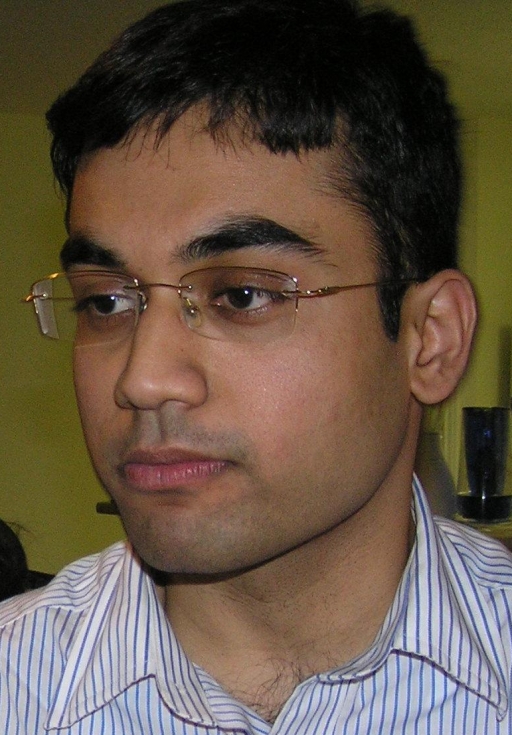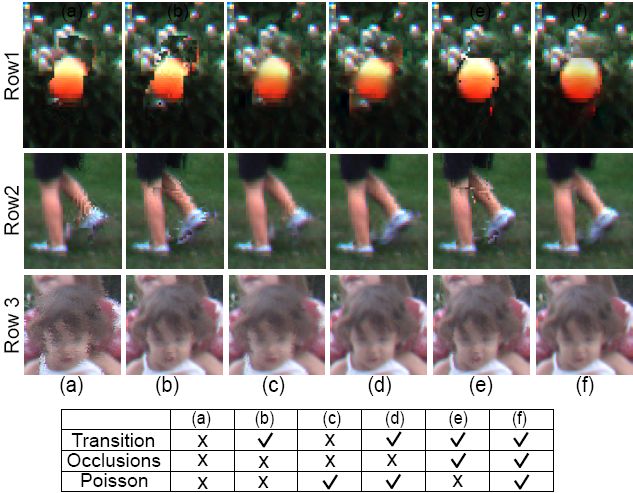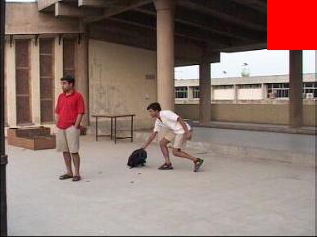
Dhruv Mahajan
PhD. Student
Department of Computer Science
Columbia University
450 Mudd Hall
500 W 120 St
New York, NY 10027
Office: 6LE4 CEPSR
Phone : 212-939-7176
Email : dhruv[at]cs.columbia.edu

|
Dhruv Mahajan
PhD. Student
Department of Computer Science |
Office: 6LE4 CEPSR |
Publications
 |
Moving Gradients: A Path-Based Method for Plausible Image Interpolation SIGGRAPH 2009 We describe a method for plausible interpolation of images, with a wide range of applications like temporal up-sampling for smooth playback of lower frame rate video, smooth view interpolation, and animation of still images. The method is based on the intuitive idea, that a given pixel in the interpolated frames traces out a path in the source images. Therefore, we simply move and copy pixel gradients from the input images along this path. A key innovation is to allow arbitrary (asymmetric) transition points, where the path moves from one image to the other. This flexible transition preserves the frequency content of the originals without ghosting or blurring, and maintains temporal coherence. Perhaps most importantly, our framework makes occlusion handling particularly simple. The transition points allow for matches away from the occluded regions, at any suitable point along the path. Indeed, occlusions do not need to be handled explicitly at all in our initial graph-cut optimization. Moreover, a simple comparison of computed path lengths after the optimization, allows us to robustly identify occluded regions, and compute the most plausible interpolation in those areas. Finally, we show that significant improvements are obtained by moving gradients and using Poisson reconstruction. Preprint: PDF
|
 |
Compressive Light Transport Sensing ACM Transactions on Graphics, Vol. 28, Issue 1 (January 2009) We propose a new framework for capturing light transport data of a real scene, based on the recently developed theory of compressive sensing. Compressive sensing offers a solid mathematical framework to infer a sparse signal from a limited number of non-adaptive measurements. Besides introducing compressive sensing for fast acquisition of light transport to computer graphics, we develop several innovations that address specific challenges for image-based relighting, and which may have broader implications. We develop a novel hierarchical decoding algorithm that improves reconstruction quality by exploiting inter-pixel coherency relations. Additionally, we design new non-adaptive illumination patterns that minimize measurement noise and further improve reconstruction quality. We illustrate our framework by capturing detailed high resolution reflectance fields for image-based relighting. . Paper: PDF
|
 |
An Analysis of the
In-Out BRDF Factorization for View-Dependent Relighting EGSR 08 Interactive rendering with dynamic natural lighting and changing view is a long-standing goal in computer graphics. Recently, precomputation-based methods for all-frequency relighting have made substantial progress in this direction. Many of the most successful algorithms are based on a factorization of the BRDF into incident and outgoing directions, enabling each term to be precomputed independent of viewing direction, and re-combined at run-time. However, there has so far been no theoretical understanding of the accuracy of this factorization, nor the number of terms needed. In this paper, we conduct a theoretical and empirical analysis of the BRDF in-out factorization. For Phong BRDFs, we obtain analytic results, showing that the number of terms needed grows linearly with the Phong exponent, while the factors correspond closely to spherical harmonic basis functions. More generally, the number of terms is {\em quadratic} in the frequency content of the BRDF along the reflected or half-angle direction. This analysis gives clear practical guidance on the number of factors needed for a given material. Different objects in a scene can each be represented with the correct number of terms needed for that particular BRDF, enabling both accuracy and interactivity.
|
 |
A Theory of Locally Low Dimensional Light
Transport SIGGRAPH 07 In this paper, we develop a theory of locally low dimensional light transport, to analytically derive the dimensionality of light transport for a local patch. We show mathematically that for symmetric patches of area A, the number of basis functions for glossy reflections increases linearly with A, while for simple cast shadows, it often increases as √A. These results are confirmed numerically on a number of test scenes. We also carry out an analysis of the cost of rendering, trading off local dimensionality and the number of patches, deriving an optimal block size. Based on this analysis, we provide useful practical insights for setting parameters in CPCA and also derive a new adaptive subdivision algorithm. Moreover, we show that rendering time scales sub-linearly with the resolution of the image, allowing for interactive all-frequency relighting of 1024x1024 images.
|

|
A
First Order Analysis of Lighting, Shading, and Shadows ACM
Transactions on Graphics, Vol. 26, Issue 1 (Jan 2007). We derive a complete first order or gradient theory of lighting, reflection and shadows, taking both spatial and angular variation of the light field into account. The gradient is by definition a sum of terms, allowing us to consider the relative weight of spatial and angular lighting variation, geometric curvature and bump mapping. Moreover, we derive analytic formulas for the gradients in soft shadow or penumbra regions, demonstrating applications to gradient-based interpolation and sampling. Paper: PDF |
|
|
A Theory of Spherical Harmonic Identities for
BRDF/Lighting Transfer and Image Consistency ECCV 06, vol IV, pp
41-55, PAMI, Vol. 30, No.2, Feb. 08 We develop new mathematical results based on the spherical harmonic convolution framework for reflection. We derive novel identities, which are the angular frequency domain analogs to common spatial domain invariants such as reflectance ratios. These lead to more general transfer algorithms for inverse rendering, and a novel framework for checking the consistency of images, to detect tampering. Paper: ECCV PAMI |
|
|
First steps toward an electronic field guide for plants
Taxon 06 Paper: PDF |
 |
A framework for activity recognition and
detection of unusual activities ICVGIP 04 We present a simple framework for activity recognition based on a model of multi-layered finite state machines, built on top of a low level image processing module for spatio-temporal detections and limited object identification is presented. The finite state machine network learns, in an unsupervised mode, usual patterns of activities in a scene over long periods of time. Then, in the recognition phase, usual activities are accepted as normal and deviant activity patterns are flagged as abnormal. Paper: PDF |